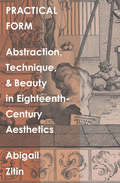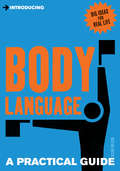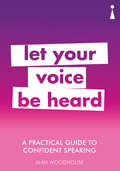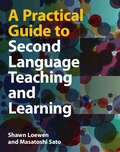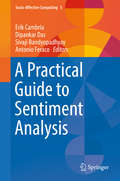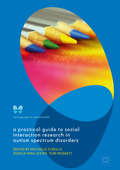- Table View
- List View
Practical Cues and Social Spectacle in the Chester Plays
by Matthew SergiAmid the crowded streets of Chester, guild players portraying biblical characters performed on colorful mobile stages hoping to draw the attention of fellow townspeople. In the fifteenth and sixteenth centuries, these Chester plays employed flamboyant live performance to adapt biblical narratives. But the original format of these fascinating performances remains cloudy, as surviving records of these plays are sparse, and the manuscripts were only written down a generation after they stopped. Revealing a vibrant set of social practices encoded in the Chester plays, Matthew Sergi provides a new methodology for reading them and a transformative look at medieval English drama. Carefully combing through the plays, Sergi seeks out cues in the dialogues that reveal information about the original staging, design, and acting. These “practical cues,” as he calls them, have gone largely unnoticed by drama scholars, who have focused on the ideology and historical contexts of these plays, rather than the methods, mechanics, and structures of the actual performances. Drawing on his experience as an actor and director, he combines close readings of these texts with fragments of records, revealing a new way to understand how the Chester plays brought biblical narratives to spectators in the noisy streets. For Sergi, plays that once appeared only as dry religious dramas come to life as raucous participatory spectacles filled with humor, camp, and devotion.
Practical Cues and Social Spectacle in the Chester Plays
by Matthew SergiAmid the crowded streets of Chester, guild players portraying biblical characters performed on colorful mobile stages hoping to draw the attention of fellow townspeople. In the fifteenth and sixteenth centuries, these Chester plays employed flamboyant live performance to adapt biblical narratives. But the original format of these fascinating performances remains cloudy, as surviving records of these plays are sparse, and the manuscripts were only written down a generation after they stopped. Revealing a vibrant set of social practices encoded in the Chester plays, Matthew Sergi provides a new methodology for reading them and a transformative look at medieval English drama. Carefully combing through the plays, Sergi seeks out cues in the dialogues that reveal information about the original staging, design, and acting. These “practical cues,” as he calls them, have gone largely unnoticed by drama scholars, who have focused on the ideology and historical contexts of these plays, rather than the methods, mechanics, and structures of the actual performances. Drawing on his experience as an actor and director, he combines close readings of these texts with fragments of records, revealing a new way to understand how the Chester plays brought biblical narratives to spectators in the noisy streets. For Sergi, plays that once appeared only as dry religious dramas come to life as raucous participatory spectacles filled with humor, camp, and devotion.
Practical Cues and Social Spectacle in the Chester Plays
by Matthew SergiAmid the crowded streets of Chester, guild players portraying biblical characters performed on colorful mobile stages hoping to draw the attention of fellow townspeople. In the fifteenth and sixteenth centuries, these Chester plays employed flamboyant live performance to adapt biblical narratives. But the original format of these fascinating performances remains cloudy, as surviving records of these plays are sparse, and the manuscripts were only written down a generation after they stopped. Revealing a vibrant set of social practices encoded in the Chester plays, Matthew Sergi provides a new methodology for reading them and a transformative look at medieval English drama. Carefully combing through the plays, Sergi seeks out cues in the dialogues that reveal information about the original staging, design, and acting. These “practical cues,” as he calls them, have gone largely unnoticed by drama scholars, who have focused on the ideology and historical contexts of these plays, rather than the methods, mechanics, and structures of the actual performances. Drawing on his experience as an actor and director, he combines close readings of these texts with fragments of records, revealing a new way to understand how the Chester plays brought biblical narratives to spectators in the noisy streets. For Sergi, plays that once appeared only as dry religious dramas come to life as raucous participatory spectacles filled with humor, camp, and devotion.
Practical Cues and Social Spectacle in the Chester Plays
by Matthew SergiAmid the crowded streets of Chester, guild players portraying biblical characters performed on colorful mobile stages hoping to draw the attention of fellow townspeople. In the fifteenth and sixteenth centuries, these Chester plays employed flamboyant live performance to adapt biblical narratives. But the original format of these fascinating performances remains cloudy, as surviving records of these plays are sparse, and the manuscripts were only written down a generation after they stopped. Revealing a vibrant set of social practices encoded in the Chester plays, Matthew Sergi provides a new methodology for reading them and a transformative look at medieval English drama. Carefully combing through the plays, Sergi seeks out cues in the dialogues that reveal information about the original staging, design, and acting. These “practical cues,” as he calls them, have gone largely unnoticed by drama scholars, who have focused on the ideology and historical contexts of these plays, rather than the methods, mechanics, and structures of the actual performances. Drawing on his experience as an actor and director, he combines close readings of these texts with fragments of records, revealing a new way to understand how the Chester plays brought biblical narratives to spectators in the noisy streets. For Sergi, plays that once appeared only as dry religious dramas come to life as raucous participatory spectacles filled with humor, camp, and devotion.
Practical English Phonetics and Phonology: A Resource Book for Students (Routledge English Language Introductions)
by Beverley Collins Inger M. Mees Paul CarleyRoutledge English Language Introductions cover core areas of language study and are one-stop resources for students. Assuming no prior knowledge, books in the series offer an accessible overview of the subject, with activities, study questions, sample analyses, commentaries and key readings – all in the same volume. The innovative and flexible ‘two-dimensional’ structure is built around four sections – Introduction, Development, Exploration and Extension – which offer self-contained stages for study. Revised and updated throughout, this fourth edition of Practical English Phonetics and Phonology: presents the essentials of the subject and their day-to-day applications in an engaging and accessible manner; covers all the core concepts of phonetics and phonology, such as the phoneme, syllable structure, production of speech, vowel and consonant possibilities, glottal settings, stress, rhythm, intonation and the surprises of connected speech; incorporates classic readings from key names in the discipline; outlines the sound systems of six key languages from around the world (Spanish, French, Italian, German, Polish and Japanese); is accompanied by a brand-new companion website which hosts a collection of samples provided by genuine speakers of 25 accent varieties from Britain, Ireland, the USA, Canada, Australia, New Zealand, South Africa, India, Singapore and West Africa, as well as transcriptions, further study questions, answer keys, links to further reading and numerous recordings to accompany activities in the book. This edition has been completely reorganised and new features include: updated descriptions of the sounds of modern English and the adoption of the term General British (GB); considerable expansion of the treatment of intonation, including new recordings; and two new readings by David Crystal and John Wells. Written by authors who are experienced teachers and researchers, this best-selling textbook will appeal to all students of English language and linguistics and those training for a certificate in TEFL.
Practical English Phonetics and Phonology: A Resource Book for Students (Routledge English Language Introductions)
by Beverley Collins Inger M. Mees Paul CarleyRoutledge English Language Introductions cover core areas of language study and are one-stop resources for students. Assuming no prior knowledge, books in the series offer an accessible overview of the subject, with activities, study questions, sample analyses, commentaries and key readings – all in the same volume. The innovative and flexible ‘two-dimensional’ structure is built around four sections – Introduction, Development, Exploration and Extension – which offer self-contained stages for study. Revised and updated throughout, this fourth edition of Practical English Phonetics and Phonology: presents the essentials of the subject and their day-to-day applications in an engaging and accessible manner; covers all the core concepts of phonetics and phonology, such as the phoneme, syllable structure, production of speech, vowel and consonant possibilities, glottal settings, stress, rhythm, intonation and the surprises of connected speech; incorporates classic readings from key names in the discipline; outlines the sound systems of six key languages from around the world (Spanish, French, Italian, German, Polish and Japanese); is accompanied by a brand-new companion website which hosts a collection of samples provided by genuine speakers of 25 accent varieties from Britain, Ireland, the USA, Canada, Australia, New Zealand, South Africa, India, Singapore and West Africa, as well as transcriptions, further study questions, answer keys, links to further reading and numerous recordings to accompany activities in the book. This edition has been completely reorganised and new features include: updated descriptions of the sounds of modern English and the adoption of the term General British (GB); considerable expansion of the treatment of intonation, including new recordings; and two new readings by David Crystal and John Wells. Written by authors who are experienced teachers and researchers, this best-selling textbook will appeal to all students of English language and linguistics and those training for a certificate in TEFL.
Practical Form: Abstraction, Technique, and Beauty in Eighteenth-Century Aesthetics (The Lewis Walpole Series in Eighteenth-Century Culture and History)
by Abigail ZitinA groundbreaking study of the development of form in eighteenth-century aesthetics In this original work, Abigail Zitin proposes a new history of the development of form as a concept in and for aesthetics. Her account substitutes women and artisans for the proverbial man of taste, asserting them as central figures in the rise of aesthetics as a field of philosophical inquiry in eighteenth-century Europe. She shows how the idea of formal abstraction so central to conceptions of beauty in this period emerges from the way practitioners think about craft and skill across the domestic, industrial, and so-called high arts. Zitin elegantly maps the complex connections among aesthetics, form, and formalism, drawing out the understated presence of practice in the writings of major eighteenth-century thinkers including Locke, Addison, Burke, and Kant. This new take on an old story ultimately challenges readers to reconsider form and why it matters.
A Practical Guide to Body Language: Read & Send the Right Signals (Practical Guide Series)
by Glenn WilsonAn INTRODUCING PRACTICAL GUIDE to understanding the body language of others and being aware of your own. INTRODUCING BODY LANGUAGE explains how to read other people and how to be more aware of what you are saying with your own body language. This easy to read guide teaches you how to understand non-verbal messages, dealing separately with different parts of the body, such as facial expressions, posture and hand movements.
A Practical Guide to Confident Speaking: Let Your Voice be Heard (Practical Guide Series)
by Alan WoodhouseIntroducing Confident Speaking, by voice, acting, communication and public speaking coach Alan Woodhouse, teaches you to express yourself more clearly, persuasively and confidently. Whether you want to ask your boss for a pay rise, chair meetings better, or deliver a faultless best-man speech, this book will teach you how to plan what to say, manage your anxieties and project your best self on the big day. TAILOR YOUR SPEECHES and find the perfect words for every occasion PROJECT YOUR VOICE and make sure you can be heard OVERCOME STAGE FRIGHT and get your point across
A Practical Guide to Graphics Reporting: Information Graphics for Print, Web & Broadcast
by Jennifer George-PalilonisSince this book first published in 2006, the field of information visualization has changed dramatically. First, information visualization has exploded online and on other digital platforms. Second, information graphics reporting has encompassed nearly every sector of communication and business. Visual reporting skills are not only relevant in traditional news environments, but many other professions as well. This edition seeks to address these changes by providing learners with a cross-platform, cross-industry approach to instruction. It will include a robust, dynamic website complete with regularly updated examples of print, online, and broadcast graphics, as well as useful tutorials and exercises. This book covers everything you need to know about reporting with graphics; information visualization and graphic design from a journalistic perspective. A companion website includes regularly updated examples of print, online, and broadcast graphics, as well as tutorials and exercises. Chapters include relevant case studies and conclude with essays from experts. When appropriate, resource files for exercises (such as Illustrator templates, images, and/or other visual reference material) will also be provided on the companion website. thegraphicsreporter.com
A Practical Guide to Graphics Reporting: Information Graphics for Print, Web & Broadcast
by Jennifer George-PalilonisSince this book first published in 2006, the field of information visualization has changed dramatically. First, information visualization has exploded online and on other digital platforms. Second, information graphics reporting has encompassed nearly every sector of communication and business. Visual reporting skills are not only relevant in traditional news environments, but many other professions as well. This edition seeks to address these changes by providing learners with a cross-platform, cross-industry approach to instruction. It will include a robust, dynamic website complete with regularly updated examples of print, online, and broadcast graphics, as well as useful tutorials and exercises. This book covers everything you need to know about reporting with graphics; information visualization and graphic design from a journalistic perspective. A companion website includes regularly updated examples of print, online, and broadcast graphics, as well as tutorials and exercises. Chapters include relevant case studies and conclude with essays from experts. When appropriate, resource files for exercises (such as Illustrator templates, images, and/or other visual reference material) will also be provided on the companion website. thegraphicsreporter.com
A Practical Guide to Scientific Writing in Chemistry: Scientific Papers, Research Grants and Book Proposals
by Andrew Terhemen TyowuaSuccessful completion of postgraduate studies, especially PhD, and career advancement in academia strongly depend on the ability to publish scientific papers or books and attract research grants. However, many chemical scientists find preparing scientific papers and research grant and book proposals difficult; partly because of insufficient training in writing and partly because there are few practical books to enable them to learn the art. This step-by-step practical guide is intended mainly for postgraduate students and early career researchers in chemical science and the libraries that serve them but will also be useful to other scientists. Key Features: Improves the reader’s chances of getting their manuscript published in chemistry journals. Increases the likelihood of winning research grants in chemistry. Takes a “lead by the hand” approach. Contains chapters on the preparation of graphical abstracts and research highlights. Uses sketches and other illustration styles to aid mental visualization of concepts. Contains practical examples taken from published papers and successful research grant proposals.
A Practical Guide to Scientific Writing in Chemistry: Scientific Papers, Research Grants and Book Proposals
by Andrew Terhemen TyowuaSuccessful completion of postgraduate studies, especially PhD, and career advancement in academia strongly depend on the ability to publish scientific papers or books and attract research grants. However, many chemical scientists find preparing scientific papers and research grant and book proposals difficult; partly because of insufficient training in writing and partly because there are few practical books to enable them to learn the art. This step-by-step practical guide is intended mainly for postgraduate students and early career researchers in chemical science and the libraries that serve them but will also be useful to other scientists. Key Features: Improves the reader’s chances of getting their manuscript published in chemistry journals. Increases the likelihood of winning research grants in chemistry. Takes a “lead by the hand” approach. Contains chapters on the preparation of graphical abstracts and research highlights. Uses sketches and other illustration styles to aid mental visualization of concepts. Contains practical examples taken from published papers and successful research grant proposals.
A Practical Guide to Second Language Teaching and Learning
by null Shawn Loewen null Masatoshi SatoAn essential resource for individuals entering the field of second language (L2) teaching and learning, this book provides a complete set of instructional materials written in accessible language. Providing enough material to use for an entire semester, the book offers exciting activities for the L2 classroom, alongside outlining the theories and research that support them, including how to connect theory with practice. Each chapter includes: extensive and up-to-date content presented in a clear, engaging, and accessible manner; pre- and post-reading activities to help students connect the topics to their own lives; pedagogical guidelines with practical suggestions; summaries of empirical studies in non-technical, jargon-free language; end-of-chapter assignments which re-enforce students' learning and relate directly to the content. The book concludes with a compelling chapter on the research–practice dialogue. Online resources include lecture slides for instructors and audio files.
A Practical Guide to Sentiment Analysis (Socio-Affective Computing #5)
by Erik Cambria Dipankar Das Sivaji Bandyopadhyay Antonio FeracoSentiment analysis research has been started long back and recently it is one of the demanding research topics. Research activities on Sentiment Analysis in natural language texts and other media are gaining ground with full swing. But, till date, no concise set of factors has been yet defined that really affects how writers’ sentiment i.e., broadly human sentiment is expressed, perceived, recognized, processed, and interpreted in natural languages. The existing reported solutions or the available systems are still far from perfect or fail to meet the satisfaction level of the end users. The reasons may be that there are dozens of conceptual rules that govern sentiment and even there are possibly unlimited clues that can convey these concepts from realization to practical implementation. Therefore, the main aim of this book is to provide a feasible research platform to our ambitious researchers towards developing the practical solutions that will be indeed beneficial for our society, business and future researches as well.
A Practical Guide to Shakespeare for the Primary School: 50 Lesson Plans using Drama
by John DoonaShakespeare is one of our key historical figures but so often he remains locked behind glass and hard to reach. The purpose of this book is to unlock Shakespeare, to remove the tag of ‘high art’ that has surrounded his work and return him to the heart of popular culture where his plays began in the first place. In his foreword, playwright Edward Bond says of A Practical Guide to Shakespeare for the Primary School, ‘It is written with knowledge and experience of its subject – but also with the knowledge of the young people with whom that experience was shared‘. John Doona will inspire and motivate pupils and teachers alike to engage with Shakespeare in a fresh and accessible manner and provide clear, tried and tested schemes of work which demonstrate how engagement with the plays and their language can have a dramatic impact on children’s literacy and writing. As well as providing practical guidance to classroom delivery and performance, techniques, approaches and attitudes, this handbook also promotes learning outcomes linked to literacy targets and cross-curricular units of learning. The central chapters of the book form a comprehensive cross-curricular unit of work on four specific plays – The Tempest, Macbeth, A Midsummer Night’s Dream and Romeo and Juliet – providing background notes and historical facts linked to the plays, along with comprehensive schemes of work for immediate implementation and ideas for generating performance. Features unique to this resource include:- Free electronic ‘info-blasts’ to all book buyers containing electronic versions of key elements of the book as well as additional resources and lesson plans Drama for the Petrified - A crash course for teachers in the techniques, approaches and attitudes required to bring Shakespeare to life A chapter on Shakespeare and his life, including ‘Five minute Will’ a short comic scripted account of his life Comprehensive schemes of work, each including a Teachers’ Crib Sheet, Story Whoosh!, Story Jigsaw, Scheme Structure Map, edited scenes and additional classroom resources A Practical Guide to Shakespeare for the Primary School is an essential resource for all primary teachers, trainee teachers and drama practitioners, offering guidance, insight and compelling schemes of work for the study of Shakespeare through drama in the primary classroom.
A Practical Guide to Shakespeare for the Primary School: 50 Lesson Plans using Drama
by John DoonaShakespeare is one of our key historical figures but so often he remains locked behind glass and hard to reach. The purpose of this book is to unlock Shakespeare, to remove the tag of ‘high art’ that has surrounded his work and return him to the heart of popular culture where his plays began in the first place. In his foreword, playwright Edward Bond says of A Practical Guide to Shakespeare for the Primary School, ‘It is written with knowledge and experience of its subject – but also with the knowledge of the young people with whom that experience was shared‘. John Doona will inspire and motivate pupils and teachers alike to engage with Shakespeare in a fresh and accessible manner and provide clear, tried and tested schemes of work which demonstrate how engagement with the plays and their language can have a dramatic impact on children’s literacy and writing. As well as providing practical guidance to classroom delivery and performance, techniques, approaches and attitudes, this handbook also promotes learning outcomes linked to literacy targets and cross-curricular units of learning. The central chapters of the book form a comprehensive cross-curricular unit of work on four specific plays – The Tempest, Macbeth, A Midsummer Night’s Dream and Romeo and Juliet – providing background notes and historical facts linked to the plays, along with comprehensive schemes of work for immediate implementation and ideas for generating performance. Features unique to this resource include:- Free electronic ‘info-blasts’ to all book buyers containing electronic versions of key elements of the book as well as additional resources and lesson plans Drama for the Petrified - A crash course for teachers in the techniques, approaches and attitudes required to bring Shakespeare to life A chapter on Shakespeare and his life, including ‘Five minute Will’ a short comic scripted account of his life Comprehensive schemes of work, each including a Teachers’ Crib Sheet, Story Whoosh!, Story Jigsaw, Scheme Structure Map, edited scenes and additional classroom resources A Practical Guide to Shakespeare for the Primary School is an essential resource for all primary teachers, trainee teachers and drama practitioners, offering guidance, insight and compelling schemes of work for the study of Shakespeare through drama in the primary classroom.
A Practical Guide to Social Interaction Research in Autism Spectrum Disorders (The Language of Mental Health)
by Michelle O'Reilly Jessica Nina Lester Tom MuskettThis book introduces a novel approach for examining language and communication in autism spectrum disorder (ASD) - discourse and conversation analysis. The authors offer a set of very different perspectives on these complex issues than are typically presented in psychological and clinical work. Emerging from a range of social scientific fields, discourse and conversation analysis involve fine-grained qualitative analysis of naturally-occurring, rather than laboratory-based, interaction, enabling broad applications. Presented in two parts, this innovative volume first provides a set of pedagogical chapters to develop the reader's knowledge and skills in using these approaches, before moving to showcase the use of discursive methods through a range of original contributions from world-leading scholars, drawn from a range of disciplines including sociology, academic and clinical psychology, speech and language therapy, critical disability studies and social theory, and medicine and psychiatry.
A Practical Guide To Studying History: Skills And Approaches (PDF)
by Tracey LoughranA Practical Guide to Studying History is the perfect guide for students embarking on degree-level study. The book: - introduces students to the concepts of historical objectivity, frameworks and debate - explains the differences in aims, methods and audiences for different types of history - explores the relationship between the skills developed during a history undergraduate degree and the practice of professional history - helps students develop the practical skills required to read historical writing critically, write good essays, and participate in historical debates - includes study questions, further reading lists, text boxes, maps and illustrations The book incorporates case studies taken from a range of regions and periods, reflecting the varied nature of historical study at university, and helps students to understand history, and to practice it successfully: it is an indispensable guide to studying history.
A Practical Guide to Teaching English in the Secondary School
by Andrew GreenA Practical Guide to Teaching English in the Secondary School offers straightforward advice, inspiration and support for all training and newly qualified secondary English teachers. Based on the best research and practice available, it offers a wide range of tried and tested strategies and practical activities to ensure success in the secondary classroom. Illustrated throughout with examples of good practice and activities to promote careful thought, the Practical Guide covers key aspects of English teaching, including: Effective lesson planning and pupil progress Getting started with drama Teaching poetry successfully and enjoyably Media education and media studies - an introduction to the curriculum and designing schemes of work Teaching English Language Choosing and using fiction for all ages English Literature at A Level Opportunities for ICT in English Planning meaningful assessment. A Practical Guide to Teaching English in the Secondary School is an essential companion to the best selling Learning to Teach English in the Secondary School. Written by expert professionals, it provides detailed examples of theory in practice, enabling you to analyse and reflect on your own teaching in order to ensure pupil learning is maximised. Providing a combination of practical ideas, educational rationales and activities to stimulate personal thought and development, this book explores a wide range of issues pertinent to the teaching and learning of English in the 21st century.
A Practical Guide to Teaching English in the Secondary School
by Andrew GreenA Practical Guide to Teaching English in the Secondary School offers straightforward advice, inspiration and support for all training and newly qualified secondary English teachers. Based on the best research and practice available, it offers a wide range of tried and tested strategies and practical activities to ensure success in the secondary classroom. Illustrated throughout with examples of good practice and activities to promote careful thought, the Practical Guide covers key aspects of English teaching, including: Effective lesson planning and pupil progress Getting started with drama Teaching poetry successfully and enjoyably Media education and media studies - an introduction to the curriculum and designing schemes of work Teaching English Language Choosing and using fiction for all ages English Literature at A Level Opportunities for ICT in English Planning meaningful assessment. A Practical Guide to Teaching English in the Secondary School is an essential companion to the best selling Learning to Teach English in the Secondary School. Written by expert professionals, it provides detailed examples of theory in practice, enabling you to analyse and reflect on your own teaching in order to ensure pupil learning is maximised. Providing a combination of practical ideas, educational rationales and activities to stimulate personal thought and development, this book explores a wide range of issues pertinent to the teaching and learning of English in the 21st century.
A Practical Guide to Teaching English in the Secondary School (Routledge Teaching Guides)
by Annabel WatsonA Practical Guide to Teaching English in the Secondary School offers straightforward advice, inspiration and a wide range of tried and tested approaches to help you find success in the secondary English classroom. Covering all aspects of English teaching, it is designed for you to dip in and out of, and enable you to focus on specific areas of teaching, your programme or pupils’ learning. Fully updated to reflect what student and early career teachers see and experience when they enter the classroom, the second edition supports trainee and practicing teachers to teach in imaginative and creative ways to promote learning in English. Packed with ideas, resources, practical teaching activities and underpinned by the latest research into how children learn, the book examines the core areas of reading, writing and spoken English including: • Plays, poetry, non-fiction, myths and legends, drama and Shakespeare • Developing writing • Creative grammar • Talk and classroom dialogue • Media and digital writing • English across the curriculum • Well-being through writing • Literature and language post-16. Including tools to support critical reflection, A Practical Guide to Teaching English in the Secondary School is an essential companion for all training and newly qualified English teachers.
A Practical Guide to Teaching English in the Secondary School (Routledge Teaching Guides)
by Annabel Watson Ruth G. NewmanA Practical Guide to Teaching English in the Secondary School offers straightforward advice, inspiration and a wide range of tried and tested approaches to help you find success in the secondary English classroom. Covering all aspects of English teaching, it is designed for you to dip in and out of, and enable you to focus on specific areas of teaching, your programme or pupils’ learning. Fully updated to reflect what student and early career teachers see and experience when they enter the classroom, the second edition supports trainee and practicing teachers to teach in imaginative and creative ways to promote learning in English. Packed with ideas, resources, practical teaching activities and underpinned by the latest research into how children learn, the book examines the core areas of reading, writing and spoken English including: • Plays, poetry, non-fiction, myths and legends, drama and Shakespeare • Developing writing • Creative grammar • Talk and classroom dialogue • Media and digital writing • English across the curriculum • Well-being through writing • Literature and language post-16. Including tools to support critical reflection, A Practical Guide to Teaching English in the Secondary School is an essential companion for all training and newly qualified English teachers.
A Practical Guide to Teaching Reading in the Early Years (PDF)
by Ann C Browne`This is a clear, jargon-free analysis of current National Curriculum and National Literacy strategy documents, combined with sensible and creative suggestions for implementing them... The activities are imaginative, consistent and true to the author's ideal of a full and empowering critical literacy for all children' - Times Educational Supplement, Friday Magazine A Practical Guide to Teaching Reading in the Early Years meets the needs of student teachers on undergraduate and postgraduate teacher training courses. It addresses the English National Curriculum for Teacher Training as well as covering the curriculum requirements for young children. It will also be relevant to others who work in early years environments and who are concerned with developing reading in considered and knowledeagable ways.
A Practical Guide to Video and Audio Compression: From Sprockets and Rasters to Macro Blocks
by Cliff WoottonLearn all about Codecs--how they work, as well as design and implementation with this comprehensive, easy-to-use guide to compression. After reading this book, you will be able to prepare and distribute professional audio and video on any platform including streamed to the web, broadcast on-air, stored in PVRs, Burned onto CD-ROMs or DVDs, delivered by broadband, or viewed in Kiosk applications, PDA devices, and mobile phones.


